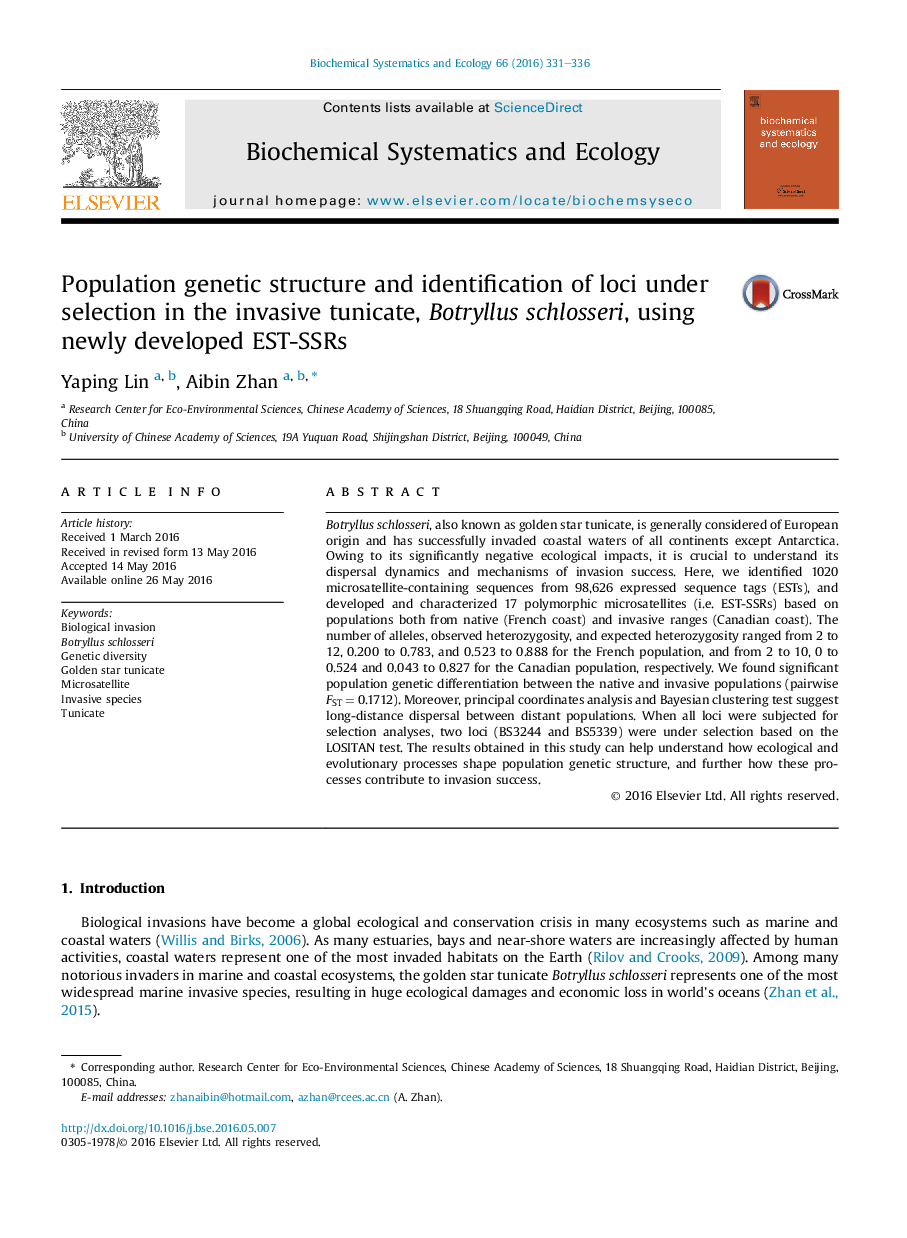| Article ID | Journal | Published Year | Pages | File Type |
|---|---|---|---|---|
| 1353776 | Biochemical Systematics and Ecology | 2016 | 6 Pages |
•.We developed and characterized 17 polymorphic EST-SSRs in a highly invasive ascidian Botryllus schlosseri•We found significant population differentiation between the native and invasive populations (pairwise FST = 0.1712).•Two microsatellite loci were found to be under selection in tested populations.•Ecological and/or evolutionary processes such as local adaptation may explain the observed genetic patterns.
Botryllus schlosseri, also known as golden star tunicate, is generally considered of European origin and has successfully invaded coastal waters of all continents except Antarctica. Owing to its significantly negative ecological impacts, it is crucial to understand its dispersal dynamics and mechanisms of invasion success. Here, we identified 1020 microsatellite-containing sequences from 98,626 expressed sequence tags (ESTs), and developed and characterized 17 polymorphic microsatellites (i.e. EST-SSRs) based on populations both from native (French coast) and invasive ranges (Canadian coast). The number of alleles, observed heterozygosity, and expected heterozygosity ranged from 2 to 12, 0.200 to 0.783, and 0.523 to 0.888 for the French population, and from 2 to 10, 0 to 0.524 and 0.043 to 0.827 for the Canadian population, respectively. We found significant population genetic differentiation between the native and invasive populations (pairwise FST = 0.1712). Moreover, principal coordinates analysis and Bayesian clustering test suggest long-distance dispersal between distant populations. When all loci were subjected for selection analyses, two loci (BS3244 and BS5339) were under selection based on the LOSITAN test. The results obtained in this study can help understand how ecological and evolutionary processes shape population genetic structure, and further how these processes contribute to invasion success.
